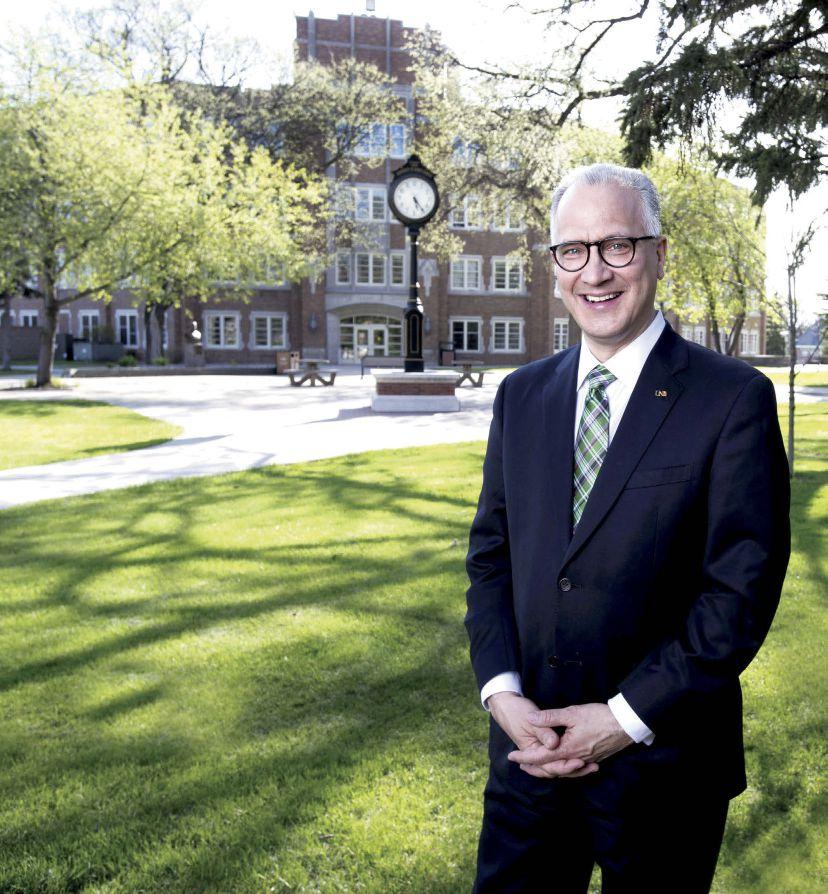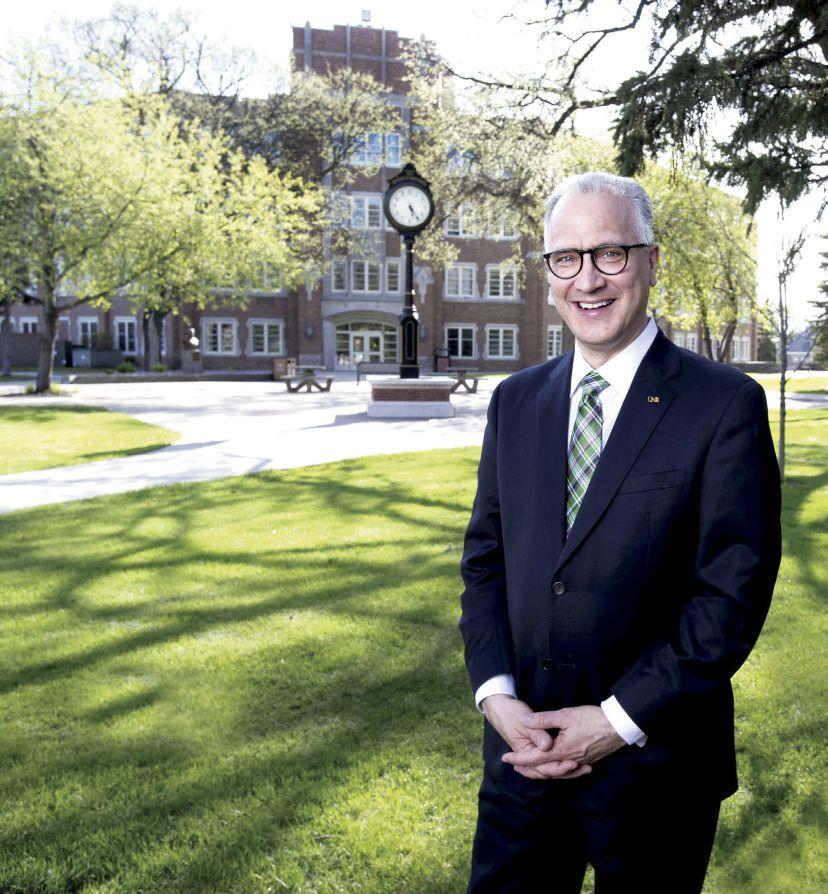
3 minute read
Meeting Challenges, Inspiring Creativity
Mark Kennedy
is president of the University of North Dakota in Grand Forks. After a 25year business career with Pillsbury, Accenture and what now is called Macy’s, along with three terms in the U.S. Congress, he set out to explore academia. After various roles at universities across the country, he was recruited to lead the Graduate School of Political Management at George Washington University, before UND’s presidency drew his attention, a role he took over July 1.

Q. A.
IN WHAT WAYS ARE LEADING A BUSINESS AND LEADING A UNIVERSITY SIMILAR?
While there are similarities between business and academia in leading a team toward the achievement of shared goals, the mission of a university is much more varied and more focused on the longer term.
Many business people would question the need for gaining wide input on decisions and taking the time to consider every alternative. In that academia is not a command and control environment, insufficient collaboration can easily backfire. That is why I have sought to engage broad-based committees in defining our overall strategy, in charting a path for our athletic programs, and setting a course for becoming a more inclusive and welcoming campus. I will make decisions, but only once others have had a chance to provide their insights.
WHAT DOES A TYPICAL WORK DAY ENTAIL FOR YOU?
My typical work day begins with catching up on the day’s news and urgent emails at my kitchen table around 6 a.m. and getting to my office or first meeting around 7:30 a.m. with few, if any, gaps between events that more often than not extend into the evening hours.
I have been meeting with the various faculty and staff departments to get up to speed with the many good activities in which UND is engaged. As we are now pressing forward to complete a strategic plan and advance many strategic imperatives, other meetings involve updates on progress and decisions of the path forward.
WHAT ARE YOUR GOALS FOR THE UNIVERSITY?
It is gratifying to see the strategic planning process embracing my goal to have UND be the chief opportunity engine for North Dakota by being the premier flagship university in the region. This requires UND to combine a strong liberal arts base for our undergraduate education with research-infused teaching. It also means that we provide research and creative content that enhances the economic and social vitality of the state and nation. This can only be accomplished with a campus environment that is open to vigorous debate on the important issues of the day, while being inclusive and welcoming to all.
WHAT ARE SOME OF THE LARGEST CHALLENGES YOU ANTICIPATE LEADING UND THROUGH?
While we have several new beautiful buildings on campus, the average age of our buildings is 50 years old and the amount of deferred maintenance is staggering. Only by focusing on those buildings essential to our mission, while removing, disposing or engaging in public-private partnerships with the remaining buildings, will UND be able to return to a physical campus that contributes to attracting the best talent.
Similarly, while UND has standout programs in every college, as well as national prominence in health care, energy, aviation and unmanned aircraft systems research, some programs have not been as diligent with staying at the cutting edge in research and scholarship or attracting new students. Priority must be given to sustaining areas of strength and investing in fields with strong demand.


HOW CAN UND AND BUSINESSES IN THE REGION WORK TOGETHER TO EASE THE WORKFORCE SHORTAGE? IS UND WORKING WITH ANY ORGANIZATIONS CURRENTLY FOR THAT PURPOSE?
The state-funded Healthcare Workforce Initiative authorized an increase in the number of medical doctors and other health care professionals that we educate. We work closely with health care practitioners throughout the state to address workforce needs. This and UND’s recent addition of a petroleum engineering degree supported by industry and governmental partners are examples of how with increased support UND can deliver the skilled workers the state needs.
Our UAS programs, both in terms of educating students and in engaging in research, provide another example of how we are working with a variety of partners to help build from the ground up a brand new industry for North Dakota.
On a local level, UND and the City of Grand Forks has cooperated on a city-wide internship program to help students test the job opportunities within the city. In addition, UND is engaging with the Grand Forks Economic Development Authority’s workforce study and we will be diligent in adjusting as much as possible to meet identified needs.










